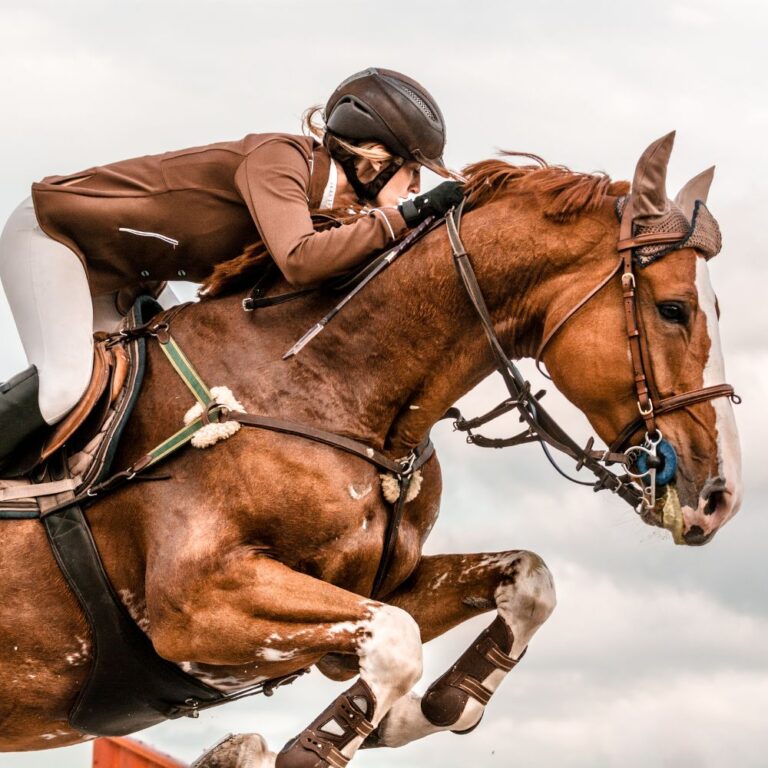
The muscle fibre types of horses are determined by the type of nerve supply to the muscles during their development. During training, however, some types of work can enlarge the muscles. These include long, slow work and power work. This article will help you understand the effects of training on muscle fibres in horses. This information is very important for your horse’s training program.
Muscle fibres play a vital role in determining the speed and strength of your horse. All horses have a combination of both slow-twitch and fast-twitch fibres. Thoroughbreds on average have 80 to 90% fast-twitch muscle fibres, while Arabian and Standardbred horses have up to 70% fast-twitch fibres.
MUSCLE FIBRE TYPES
As with feed fibre, there is more than one kind of muscle fibre, and these differ according to the speed of contraction of the individual fibre type, and whether it generates ATP Aerobically or Anaerobically.
There are three types of muscle fibre:
- Type I: contract relatively slowly and are known as “slow twitch” they generate energy aerobically, and are engaged at low speeds.
- Type IIA and Type IIB: contract quickly, and are known as “fast twitch” fibres. Type IIA can generate energy aerobically and anaerobically, and the process of training or physical conditioning promotes their use. Type IIB fibres generate energy anaerobically.
MUSCLE FIBRE COMPOSITION
Muscle fibre composition in horses is highly variable. The percentages of the different types of fibres are directly related to the horse’s athletic ability in endurance events. Researchers have developed a number of methods for assessing the fitness of horses. A heart rate monitor has proven to be extremely useful in many cases. The researchers concluded that muscle fibre composition may also vary with age and training.
In addition, training induces a reversible change in muscle fibre composition. Long-term exercise training increases muscle glycogen content, thereby altering the velocity of shortening and fatigue resistance. During lower-intensity exercise, fat and fibre provides energy for muscle contraction. However, this type of muscle fibre is less efficient than Type II fibres. These muscles also have low oxidative capacity and fatigue more easily than Type I fibres.
Type IIA and Type IIB fibres give horses speed
The amount of Type II A and B muscle fibres in a horse’s skeletal muscles is one of the most significant differences between a thoroughbred and a quarter horse. Horses have a higher proportion of Type IIb fibres than most other species and this is the main difference between the two types of muscle. However, horses do have some inherent limitations, and training is an important way to unlock their full potential.
Muscle fibres are arranged differently in different muscles, depending on the exercise performed by the horse. Unlike humans, horses have a mixture of muscle fibres, but some breeds have more or less of one muscle type than another. The breeds of Arabians and Quarter horses, for example, were bred for long distance endurance, which demands a high proportion of type IIA fibres.
Effects of training on muscle fibres
Training has a number of beneficial effects on the muscle fibres in horses, but the specific type of adaptations a horse develops are not completely understood. Although it is believed that an increase in the number of Type I fibres increases performance, these adaptations are not necessary in short distance racing. A high proportion of large type IIA and IIB muscle fibres in a horse’s body is beneficial in short to middle distance racing.
In a study of young NSCT racehorses, changes in muscle fibre composition were observed after training. These changes support the theory that the muscle fibres change from type IIA to type IIB in an orderly, graded manner. Similar results were found in Standardbreds by Karlstrom and Roneus. These researchers also noted that the levels of the antioxidant enzyme, MCT1, were increased after training.
Written by Peter Zamojski
Co-founder of CEN Nutrition
